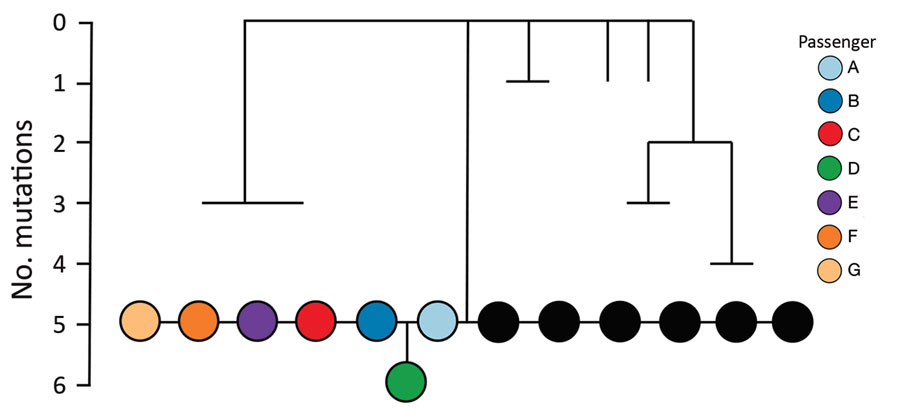Volume 27, Number 3—March 2021
Synopsis
Genomic Evidence of In-Flight Transmission of SARS-CoV-2 Despite Predeparture Testing
Figure 4

Figure 4. Simplified maximum-likelihood phylogenetic tree of genomes from severe acute respiratory syndrome coronavirus 2 from 7 passengers who traveled on flight EK448 (Boeing 777–300ER) from Dubai, United Arab Emirates, to Auckland, New Zealand, with a refueling stop in Kuala Lumpur, Malaysia, on September 29, 2020. Tree shows positive cases along with their closest genomic relatives sampled from the global dataset. Black circles illustrate cases obtained from the global dataset that are genetically identical, sampled September 2–23, 2020. Scale bar shows the number of mutations relative to the closest reconstructed ancestor from available global data.
1These authors contributed equally to this article.
Page created: December 18, 2020
Page updated: February 21, 2021
Page reviewed: February 21, 2021
The conclusions, findings, and opinions expressed by authors contributing to this journal do not necessarily reflect the official position of the U.S. Department of Health and Human Services, the Public Health Service, the Centers for Disease Control and Prevention, or the authors' affiliated institutions. Use of trade names is for identification only and does not imply endorsement by any of the groups named above.